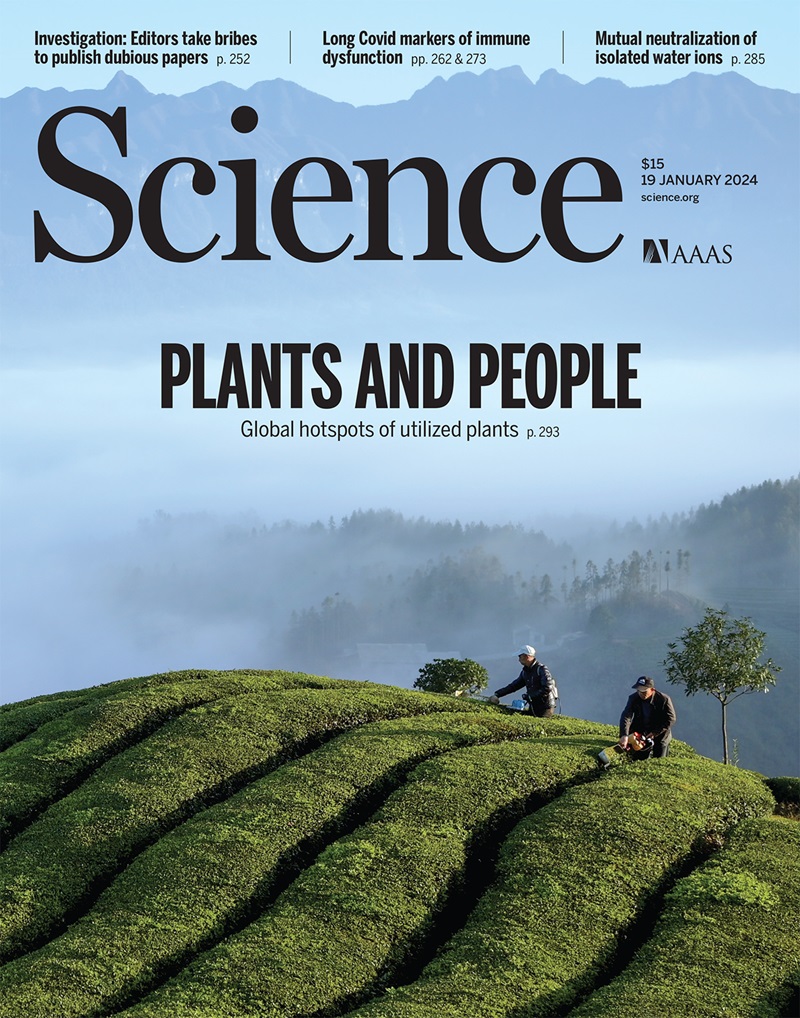Interphase cell morphology defines the mode, symmetry, and outcome of mitosis
IF 44.7
1区 综合性期刊
Q1 MULTIDISCIPLINARY SCIENCES
Science
Pub Date : 2025-05-01
引用次数: 0
Abstract
During tissue formation, dynamic cell shape changes drive morphogenesis while asymmetric divisions create cellular diversity. We found that the shifts in cell morphology that shape tissues could concomitantly act as conserved instructive cues that trigger asymmetric division and direct core identity decisions underpinning tissue building. We performed single-cell morphometric analyses of endothelial and other mesenchymal-like cells. Distinct morphological changes switched cells to an “isomorphic” mode of division, which preserved pre-mitotic morphology throughout mitosis. In isomorphic divisions, interphase morphology appeared to provide a geometric code defining mitotic symmetry, fate determinant partitioning, and daughter state. Rab4-positive endosomes recognized this code, allowing them to respond to pre-mitotic morphology and segregate determinants accordingly. Thus, morphogenetic shape change sculpts tissue form while also generating cellular heterogeneity, thereby driving tissue assembly.

间期细胞形态决定有丝分裂的方式、对称性和结果
在组织形成过程中,动态的细胞形态变化驱动形态发生,而不对称分裂创造细胞多样性。我们发现,形成组织的细胞形态的变化可以同时作为保守的指导线索,触发不对称分裂和指导核心身份决定,支持组织构建。我们对内皮细胞和其他间充质样细胞进行了单细胞形态学分析。不同的形态学变化使细胞转变为“同构”分裂模式,这在整个有丝分裂过程中保留了有丝分裂前的形态。在同构分裂中,间期形态似乎提供了定义有丝分裂对称、命运决定分裂和子状态的几何密码。rab4阳性核内体识别这个编码,允许它们对有丝分裂前的形态做出反应,并相应地分离决定因子。因此,形态发生的形状变化塑造了组织形态,同时也产生了细胞异质性,从而推动了组织组装。
本文章由计算机程序翻译,如有差异,请以英文原文为准。
求助全文
约1分钟内获得全文
求助全文
来源期刊

Science
综合性期刊-综合性期刊
CiteScore
61.10
自引率
0.90%
发文量
0
审稿时长
2.1 months
期刊介绍:
Science is a leading outlet for scientific news, commentary, and cutting-edge research. Through its print and online incarnations, Science reaches an estimated worldwide readership of more than one million. Science’s authorship is global too, and its articles consistently rank among the world's most cited research.
Science serves as a forum for discussion of important issues related to the advancement of science by publishing material on which a consensus has been reached as well as including the presentation of minority or conflicting points of view. Accordingly, all articles published in Science—including editorials, news and comment, and book reviews—are signed and reflect the individual views of the authors and not official points of view adopted by AAAS or the institutions with which the authors are affiliated.
Science seeks to publish those papers that are most influential in their fields or across fields and that will significantly advance scientific understanding. Selected papers should present novel and broadly important data, syntheses, or concepts. They should merit recognition by the wider scientific community and general public provided by publication in Science, beyond that provided by specialty journals. Science welcomes submissions from all fields of science and from any source. The editors are committed to the prompt evaluation and publication of submitted papers while upholding high standards that support reproducibility of published research. Science is published weekly; selected papers are published online ahead of print.
 求助内容:
求助内容: 应助结果提醒方式:
应助结果提醒方式:


